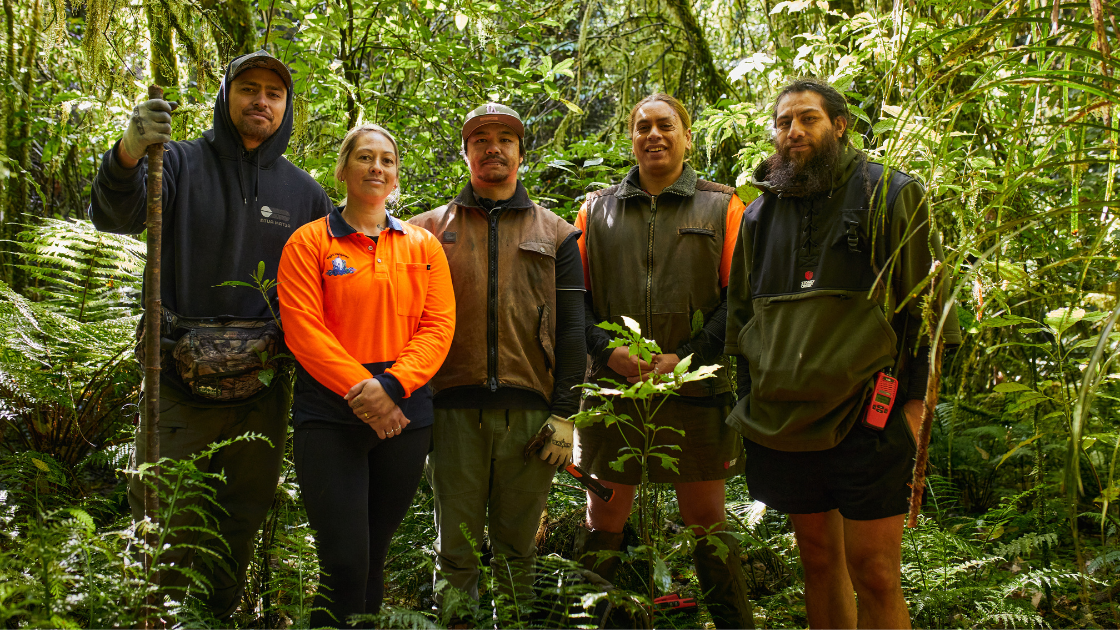
Ngā Mata Hiringa
Restoring the biodiversity and taonga species of rakau and manu in the Opuiaki and Ngamanawa areas of the Kaimai Mamaku ranges.
PURPOSE
The Ngā Mata Hiringa project carries out important pest and weed control work across several areas. In the Ngatuhoa Block, the team manages 580 hectares of pest animal control. They target pests such as mustelids, possums, feral cats, and rats, which all threaten native wildlife.
At the Waitaia Lodge Block, they manage another 180 hectares of pest control focused on the same species. The team also carries out wilding pine removal on 77 hectares of iwi land next to the Ngatuhoa area, helping to protect and restore native bush.
In the nearby Ōpuiaki Forest, a Ngāti Hangarau kaitiaki working seperate to the project, set up and maintains a 1,130-hectare stoat control network.
Together, these efforts support the recovery of native species and ecosystems, and reflect a strong commitment to kaitiakitanga
Contact
PROJECT AREA
LATEST UPDATES
IMPACT
Targeted predator control in three blocks in Opuiaki (180-ha (Waitaia Lodge Block) + 320-ha (Ngatuhoa Block) + 80-ha (adjacent to Ngatuhoa area).
*1 July 24 - 30 June 25
443
Predators removed through trapping.
580
Hectares under control.
4
Kaimahi employed.
$903,640
Ecosystem services contribution to regional economy.
THE MAHI
-

Track lines
Marking, cutting and maintaining trapping lines across their entire project area.
-

Pest control
Ground-based pest control and monitoring to increase long term sustainability of te Taiao.
-

DATA
Utilising best practice surveilance and reporting measures to track water quality, tuna, invertebrates, manu, rongoa and taonga plant species.
-

Education and engagement
Regularly updating and engaging with the iwi, hapū and wider community.
-

Kauri Management
Kauri assessment and inventory using drones and photogrammetry mapping. Followed with visual inspections and identification by kaimahi on the ground
-

Supporting whānau
Job creation for iwi members along with capacity building in skills, knowledge (including mātauranga) and on-the-job experience.
PROJECT AREA VALUES
Priority DOC ecosystem
Opuiaki
EMU rank 1149
Threatened and at-risk species
Pekapeka, kōkako, kaka, kiwi and Notrh Island robin.
Other DOC assets
Limited public access, 20x20 vegetation plots, possum foliar browse index, and kōkako/kiwi survey/monitoring.
Taonga SPECIES
Protecting taonga species is crucial for preserving the biodiversity and cultural heritage of New Zealand. Taonga species listed below are significant and found within or near the project area of Ngamanawa. By protecting these species, we can ensure that they are around for future generations to enjoy and appreciate. Conservation efforts such as habitat restoration, predator control, and community education programs are all important steps in protecting taonga species. By working together, we can preserve the unique natural and cultural heritage of New Zealand for years to come.
Kiwi
The North Island brown kiwi is the only kiwi still found in the wild. As they can fight off a stoat once it reaches 1.2kg in weight so protecting the chicks is vital to the survival of the wild populations.
Photo Credit: Molly Johnson
Kōkako
Kōkako pairs sing the longest duet of any songbird in the world. After almost becoming extinct in the Kaimai Mamaku, kōkako are making an impressive comeback with the help of intensive pest control.
Photo Credit: Jake Osborne
Tuna
Tuna | eel are a culturally significant species and traditional food source to Māori. They grow up to 2 meters long and live for up to 100 years! Their populations have been declining due to habitat loss, overfishing, and the introduction of predators.
Kauri
Kauri can grow up to 50 meters tall and have a trunk diameter of up to 16 meters. These trees are culturally significant to Māori and have been used for centuries for building, carving, and medicine.



















